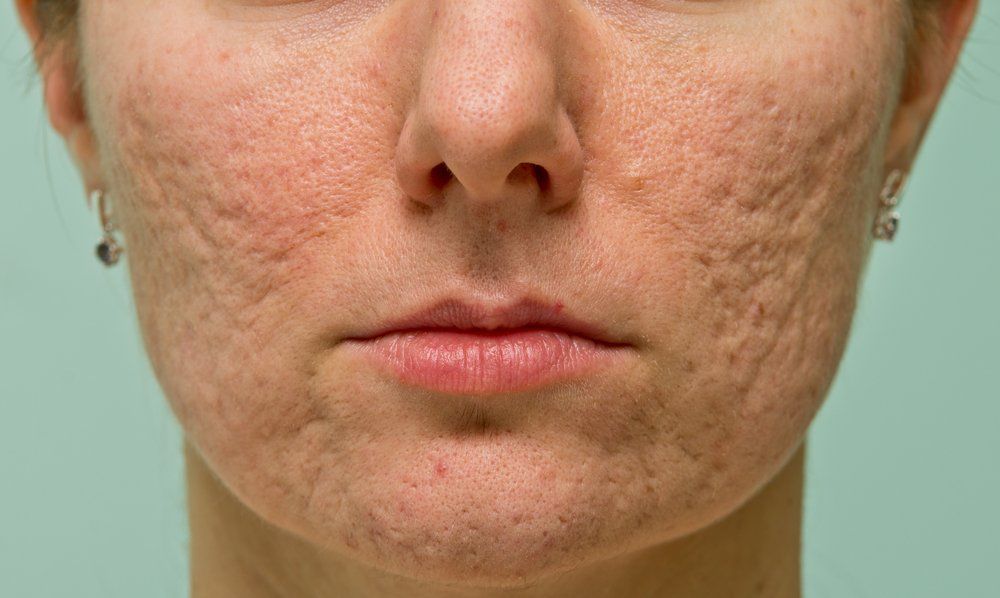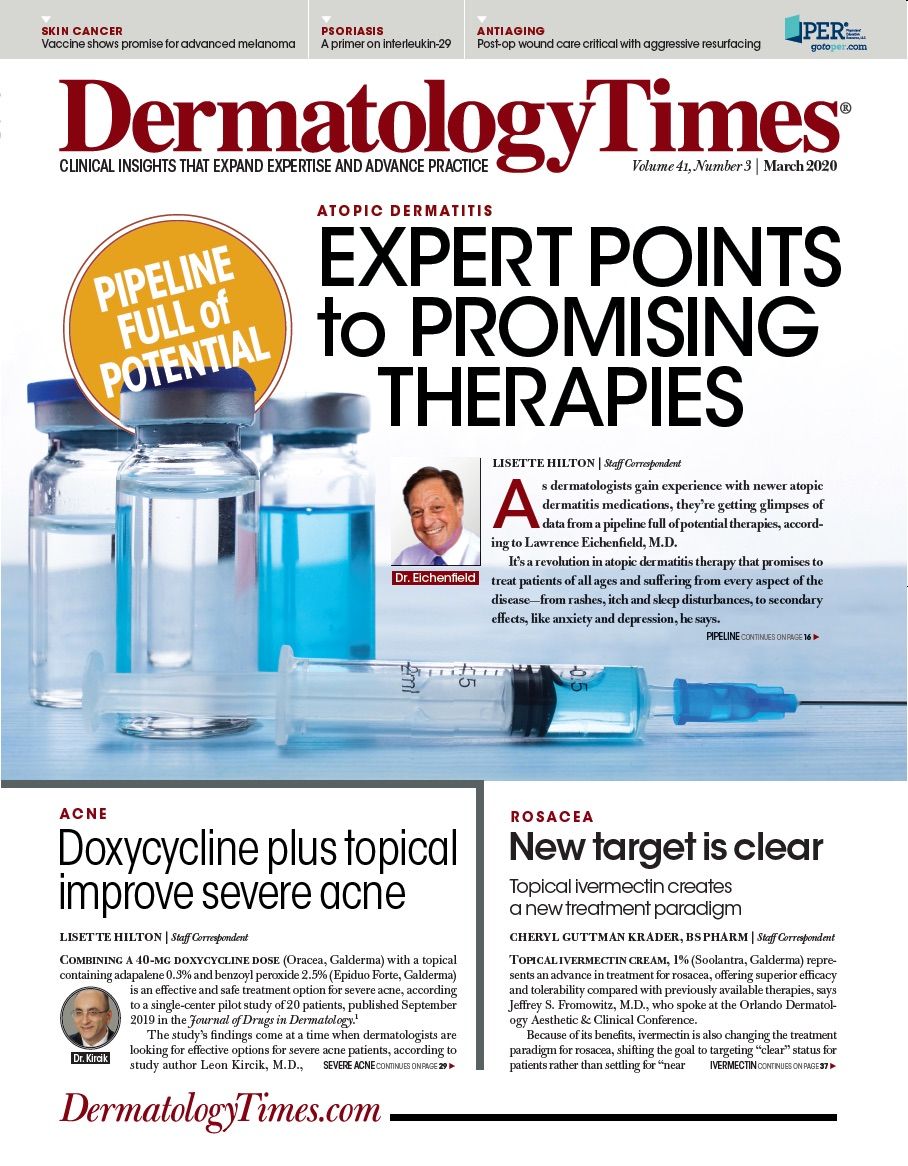- Case-Based Roundtable
- General Dermatology
- Eczema
- Chronic Hand Eczema
- Alopecia
- Aesthetics
- Vitiligo
- COVID-19
- Actinic Keratosis
- Precision Medicine and Biologics
- Rare Disease
- Wound Care
- Rosacea
- Psoriasis
- Psoriatic Arthritis
- Atopic Dermatitis
- Melasma
- NP and PA
- Skin Cancer
- Hidradenitis Suppurativa
- Drug Watch
- Pigmentary Disorders
- Acne
- Pediatric Dermatology
- Practice Management
- Prurigo Nodularis
- Buy-and-Bill
Publication
Article
Dermatology Times
Adjunct therapies may support fractional CO2
Author(s):
Although the fractional ablative CO2 laser is a first-line treatment for acne scarring, the potential for side effects from repetitive treatments leaves room for improvement with additive therapies, according to a recent review.

Although the fractional ablative CO2 laser is a first-line treatment for acne scarring, the potential for side effects from repetitive treatments leaves room for improvement with additive therapies, according to a recent review. However, its authors add, adjunct options ranging from pharmaceuticals to platelet-rich plasma (PRP) require further study.
NEW: Pulsed dye laser may improve nonvascular conditions
When treating acne scars with laser alone, the incidence of adverse events rises with the number of treatments, say authors led by Yun Zhu Mu, M.D., department of dermatology, Affiliated Hospital of North Sichuan Medical College, Nanchong, Sichuan, China. These adverse events can include prolonged erythema and edema and, particularly in skin of color, postinflammatory hyperpigmentation. The review appeared in Dermatologic Therapy.1
Options ranging from isotretinoin and topical steroids to devices, stem cells and PRP may potentially improve results while reducing downtime. Regarding PRP, small studies have shown significant improvement in acne scarring and post-treatment side effects in combination with fractional CO2 laser. However, Mu et al. note that in two recent studies, adding topical PRP prolonged postprocedural erythema and edema.2,3 Interpreting such mixed results is difficult, says Ashish C. Bhatia, M.D., who was not involved with the review. There could be variations in the type of PRP used or in patients treated. Because PRP uses each person’s autologous plasma-derived growth factors, he adds, results are inherently difficult to generalize. Dr. Bhatia is associate professor of clinical dermatology at Northwestern University Feinberg School of Medicine, Chicago. He also is co-director of dermatologic, laser and cosmetic surgery and medical director for dermatologic research at Oak Dermatology in Chicago.
Mu et al. highlight two studies showing that combining intense pulsed light (IPL) with fractional CO2 yielded better therapeutic effects with diminished redness versus laser alone.
Subcutaneous incision releases tethering beneath a scar’s surface and loosens scar fibers that are fixed to the dermis as a first step in treating atrophic acne scars. In a 50-patient study, combining subcision with fractional CO2 laser achieved statistically significant improvements over laser alone. In another study, the “cure rate” of combination therapy was 54.7% vs 43% for laser-only treatment (P<0.001). However, the combination treatment side had a higher incidence of hyperpigmentation and bruising.4
Combining RF energy with fractional CO2 adds the effect of a temperature increase in the upper layers of the dermis. This temperature increase produces a firming and compacting effect, write Mu et al. A 10-patient study showed more pronounced clinical improvement and faster healing with fewer side effects and pigmentary changes in the combination treatment group. But due to the study’s small size, the authors reserve judgment on this combination.
RELATED: Adjunctive platelet-rich plasma may improve acne scars
“The two areas where I see the most promise are fractional CO2 combined with radiofrequency microneedling and with subcision,” Dr. Bhatia says. Like fractional laser therapy, he says, these technologies have demonstrated acne scarring efficacy on their own. Their mechanisms of action also complement that of laser resurfacing.
“Fractional CO2 does a good job from the surface down. Basically you’re drilling little micrometer holes in the scar-type collagen in a pattern, and the depth is based on the energies used,” he says.
This process vaporizes some of the scar tissue while remodeling existing collagen and stimulating new collagen growth around the micro-channels.
“That improves the surface texture, along with more superficial and intermediate remodeling of the actual scars,” says Dr. Bhatia. “In some cases, you can see improvement in pigmentation as well.”
Conversely, he notes, subcision targets fibrous bands of scar tissue that tether down scars, creating undulations of the overlying skin.
RELATED: Aggressive, early treatment may prevent acne scars
“So if you release those bands from underneath, that takes care of the deeper structural issue,” Dr. Bhatia says.
After subcision, he often injects hyaluronic acid or calcium hydroxylapatite fillers to help normalize contour of the overlying skin. Conversely, he says, RF microneedling penetrates to a prescribed depth and heats tissue from underneath, making it a good choice for remodeling non-tethered acne scars at medium and deeper depths.
Disclosures:
Dr. Bhatia is a Cutera investigator, speaker and consultant and Solta Medical consultant
References:
1. Mu YZ, Jiang L, Yang H. Dermatol Ther. 2019 Sep 8:e13084.
2. Faghihi G, Keyvan S, Asilian A, Nouraei S, Behfar S, Nilforoushzadeh MA. Indian J Dermatol Venereol Leprol. 2016;82:162-168.
3. Al Taweel AI, Al Refae AA, Hamed AM, Kamal AM. J Cosmet Dermatol. 2019;18:150-155.
4. Nilforoushzadeh MA, Faghihi G, Jaffary F, Haftbaradaran E, Hoseini SM, Mazaheri N. Adv Biomed Res. 2017;6:20.






